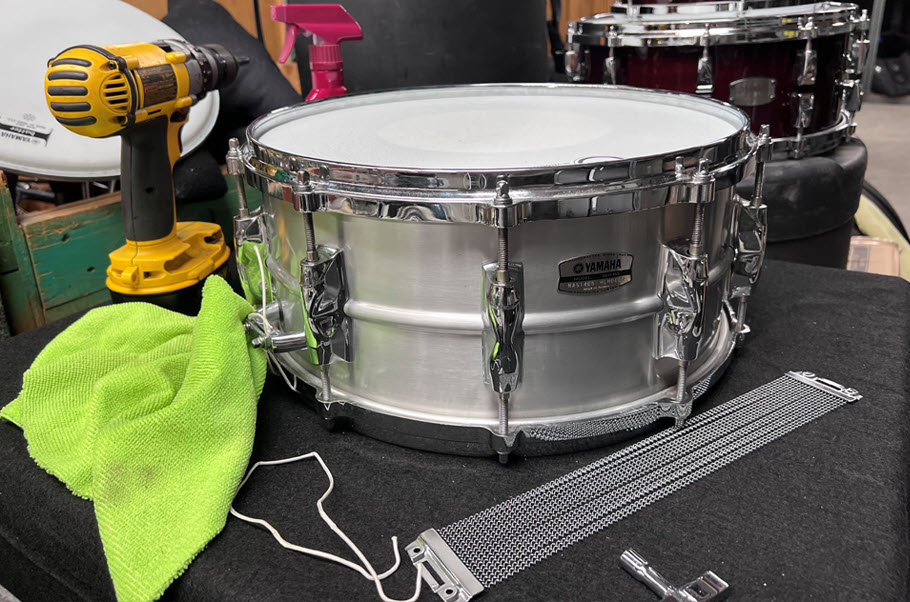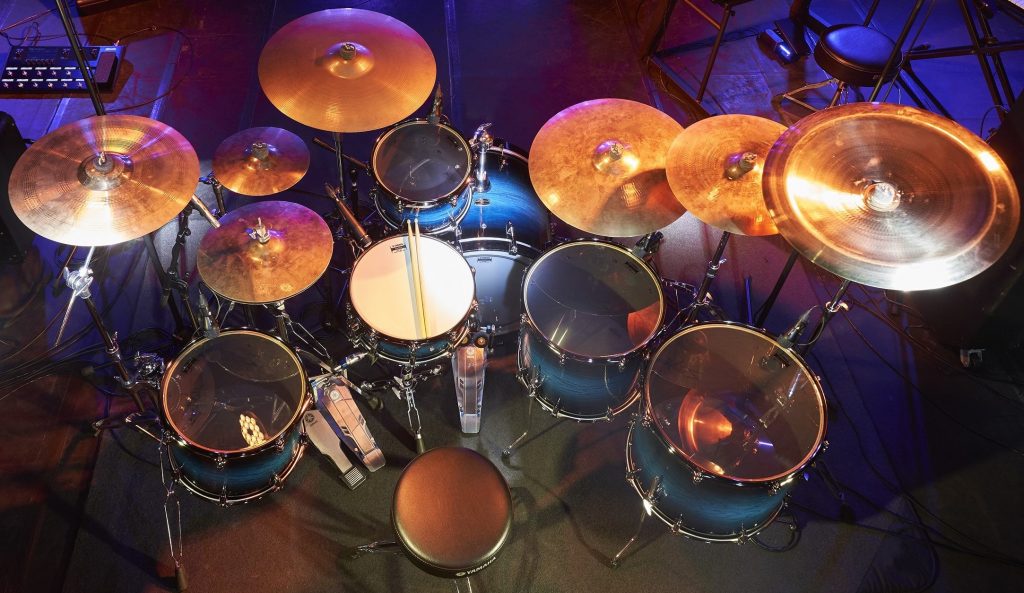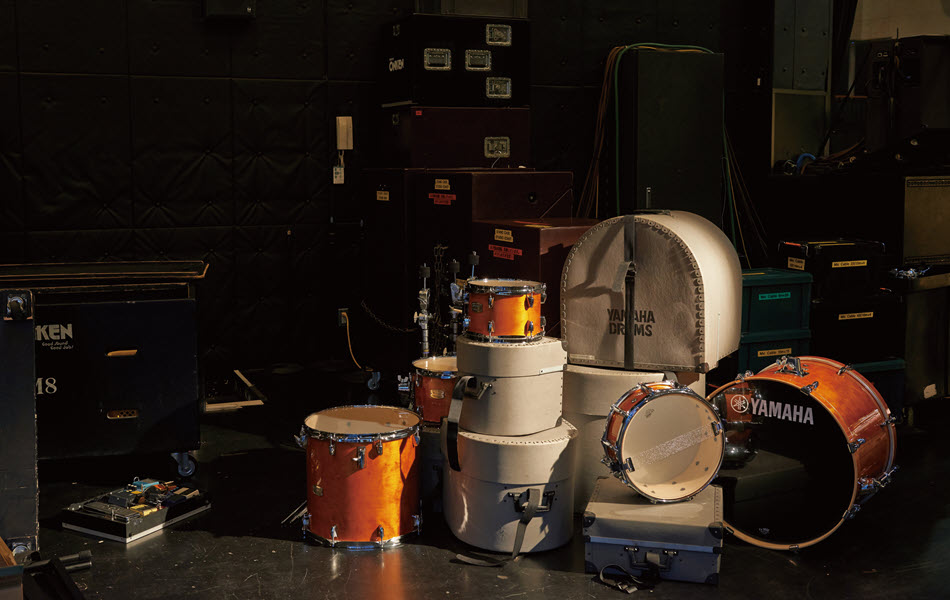Discover the Sonic Possibilities of Your Drums, Part 1
Get the most out of your drums.
Getting a great drum sound is a little like creating a great recipe: All of the ingredients add to the flavor, and changing even one of them can have a significant effect on the end result. Let’s take a look at what formulates the sonic identity of a drum.
The Shell Game
Two main components have a huge influence on the sound of your drums: the material used in the construction of the drum shells, and the drum heads. Wood is by far the most common material used for drum shells, and the woods used for this purpose are known as tonewoods. Each tonewood has unique properties that contribute to the sound.
Maple, for example, produces an articulate tone, balanced mids and highs, and a slightly warm low end. The shells used for Yamaha Absolute Hybrid Maple Series drums are constructed from three plies of maple on each side of a single ply of wenge, an extremely dense wood that produces a relatively bright tone with a resonant low end. Check out Yamaha Artist Wale Adeyemi playing an Absolute Hybrid Maple drum kit.
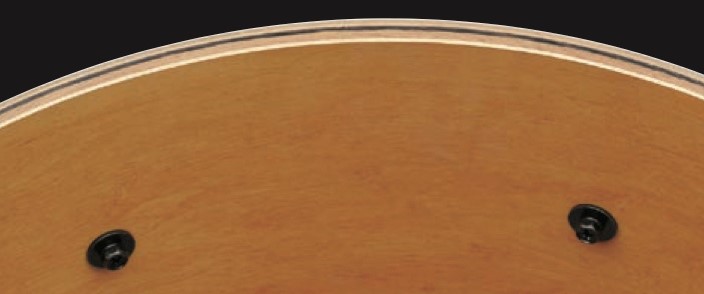
Another popular tonewood used in the manufacture of drum shells is birch. Yamaha Recording Custom Series drums feature birch shells that minimize unwanted overtones and produce a bright timbre with plenty of power in the bottom end to cut through heavy instrumentation. Listen to Yamaha Artist Larnell Lewis playing a Recording Custom kit.
Other tonewoods utilized for making drums include oak (used for Yamaha Live Custom Hybrid Oak Series drums), mahogany, poplar (which you’ll find in Yamaha Rydeen Series drums) and jatoba, an extremely hard wood that serves as the center ply in Yamaha PHX Series drums, helping increase projection and strengthening the fundamental tone.
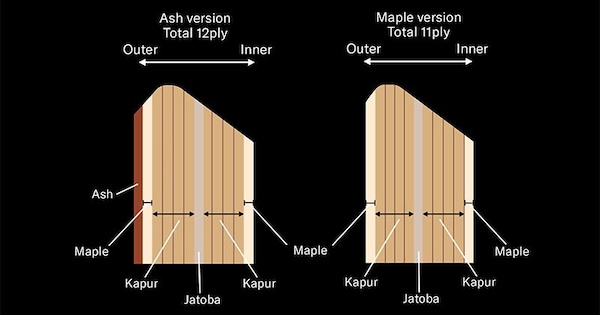
Listen to Yamaha Artist Moses Boyd playing a PHX Series drum kit.
Here’s Yamaha Artist Satoshi Bandoh playing a Live Custom Hybrid Oak kit.
You can hear a comparison of tonewoods in this video.
Snare Drum Shells
Snare drum shells can be made from the tonewoods mentioned above, or from metals such as steel, aluminum, brass, copper or bronze, each of which has a unique sonic signature. Aluminum snare drums like Yamaha Recording Custom Aluminum snares produce a bright, crisp, dry sound with a short sustain that may not need damping (see below). Brass is the most responsive metal used for the construction of snare drum shells, and gives Yamaha Recording Custom Brass snares a dry, articulate sound with dark overtones, a sharp crack and more low end than other metals.
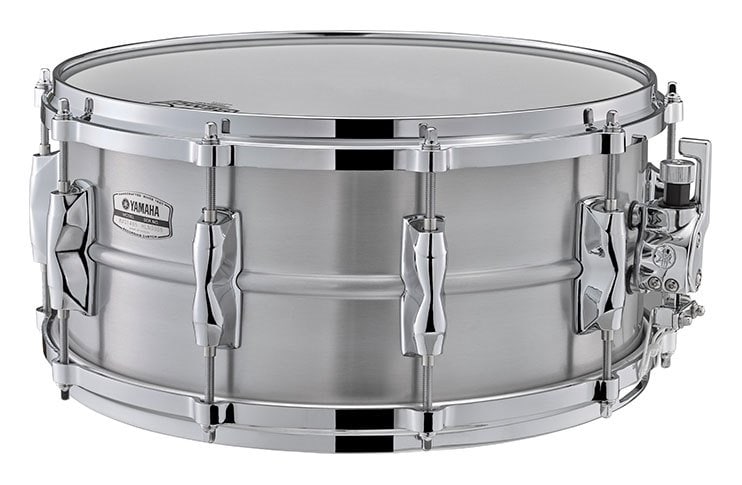
Steel shells like those used in Yamaha Recording Custom Stainless Steel and Stage Custom Steel snare drums accentuate the mid and high frequencies, and generally produce more ring so they may require damping.
For a comparison of Yamaha Recording Custom snare drums, check out this video.
Mind Your Head(s)
The other major influence on the sound of your drums is the drum heads. Most drummers use different types of heads for the top and bottom: a batter head for the top (the one you hit), and a resonant head for the bottom. Resonant heads are generally thinner than batter heads. This is especially true when it comes to snare drums, which use very thin (2 to 5 “mil,” or thousandths of an inch) bottom heads for quick response and high sensitivity to the vibrating snare wires.
While there are no hard rules about using a resonant head for the batter or vice-versa, using a standard resonant head on the bottom of a snare drum will drastically reduce the sensitivity and playability of the drum. On the other hand, using a bottom snare head as a batter will inevitably result in breakage because those kinds of heads are not designed to be hit with a drumstick.
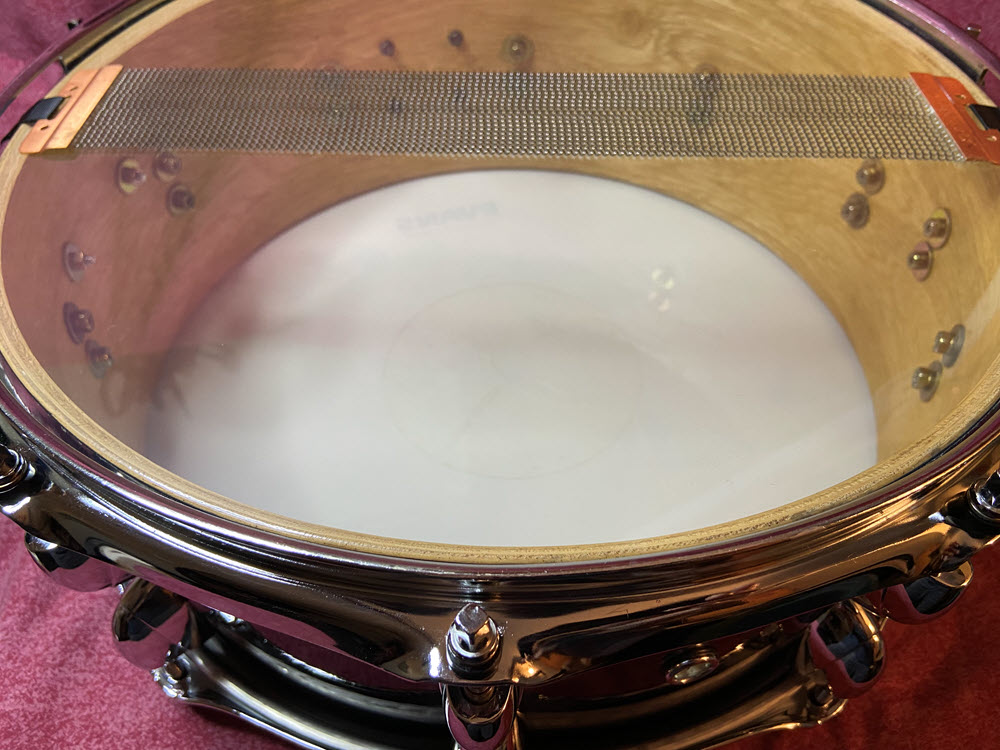
Drumheads are constructed from one or two plies of material, most often a plastic film which ensures consistency and durability (though heads made from calfskin are still available). Batter heads can be one- or two-ply but resonant heads tend to be one-ply. The thickness of a one-ply batter head is around 10 mil; each ply of a two-ply head can have a thickness between 7 and 10 mil, and there are two-ply heads manufactured with plies of different thickness. Resonant heads tend to be one-ply with a thickness varying between 7 and 12 mil. Thicker resonant heads produce deeper tone and longer sustain, while thinner ones produce a brighter tone with less sustain.
As you’d expect, a two-ply head will last longer under a heavy hitter but two-ply heads rebound slower than one-ply heads. One-ply heads produce a brighter timbre with more sustain and overtones than two-ply heads, which is why many jazz drummers prefer one-ply heads on both sides. The reduced sustain and deeper tone characteristics of two-ply heads, however, makes them an excellent choice for playing rock, pop, funk, R&B or metal.
One- and two-ply heads are also available in coated varieties, where a textured coating is sprayed onto the head. The coating provides a damping effect, resulting in a warmer, darker tone and a reduction of overtones compared to a non-coated head. Coated heads are a must for jazz drummers who play with brushes because the coating provides the “swish” when a brush is dragged across the head. The coating also shortens the sustain of the drum, enabling you to create a wide variety of tonalities by mixing and matching clear and coated heads on the top and bottom of a drum. Coated heads are also a good choice when you’re looking for a vintage vibe for playing rock, traditional country or R&B.
Mixing and Matching
When you consider the variety of tonewoods and metals used for the construction of drum shells, plus the wide assortment of drumheads available on the market, the sonic possibilities are endless — and provide you with a way to “fine-tune” the tonality of your drums. If, for example, you find that birch shells are a bit too bright for your taste, you can dial the brightness down by using coated heads on top and bottom. On the other hand, if you feel your drums sound too dark, you can try one-ply clear heads on top. A steel snare drum that has too much ring can be tamed with a two-ply head, even more if it’s a coated two-ply head. Feel free to experiment until you find your unique drumming voice!
Getting Rid of Ring
Controlling the overtones and sustain of a drum can be tricky business, and that’s why some batter heads are offered in versions with a “dot” in the center of the head, either on the playing surface or on the underside of the head (the latter is known as a “reverse dot”). The dot is a separate layer approximately 3 to 5 mil thick, bonded to the head. Along with making the head more durable, it helps control some of the ring.
Another type of head designed to control overtones utilizes a “control ring” underneath the edges of the head — an extra ply that’s only about an inch or two wide. Usually found on snare drum heads, a control ring also reduces sustain.
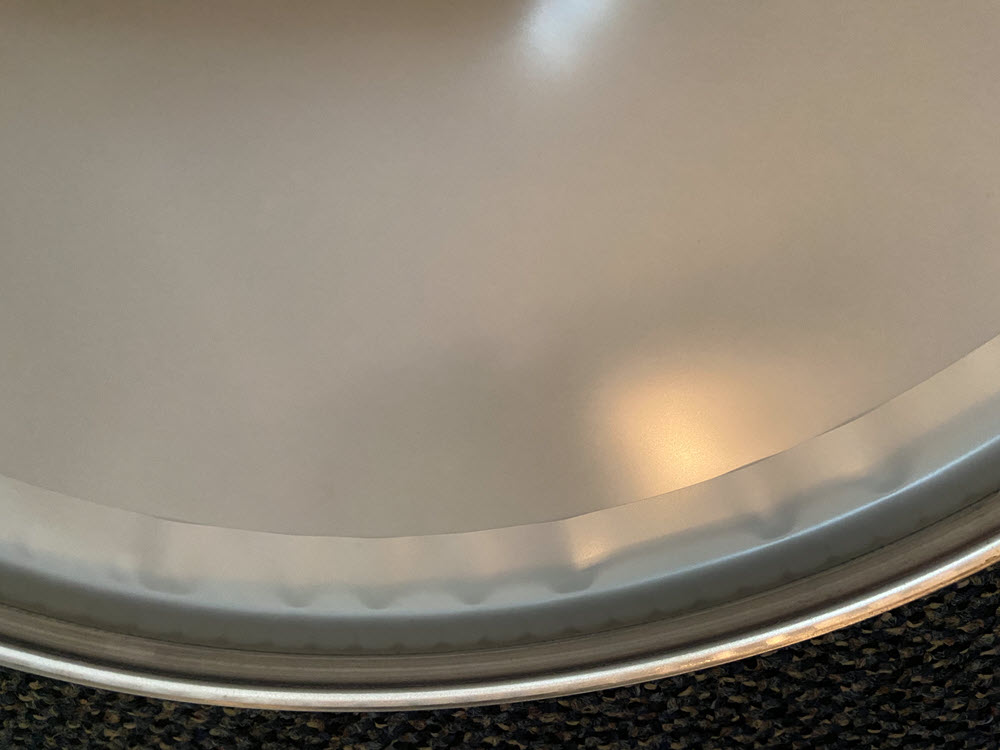
A similar effect can be achieved by using an external clip-on muffler or “O-ring” mufflers that lay on top of any batter head. Stick-on gel dampers can also be applied, as shown below.
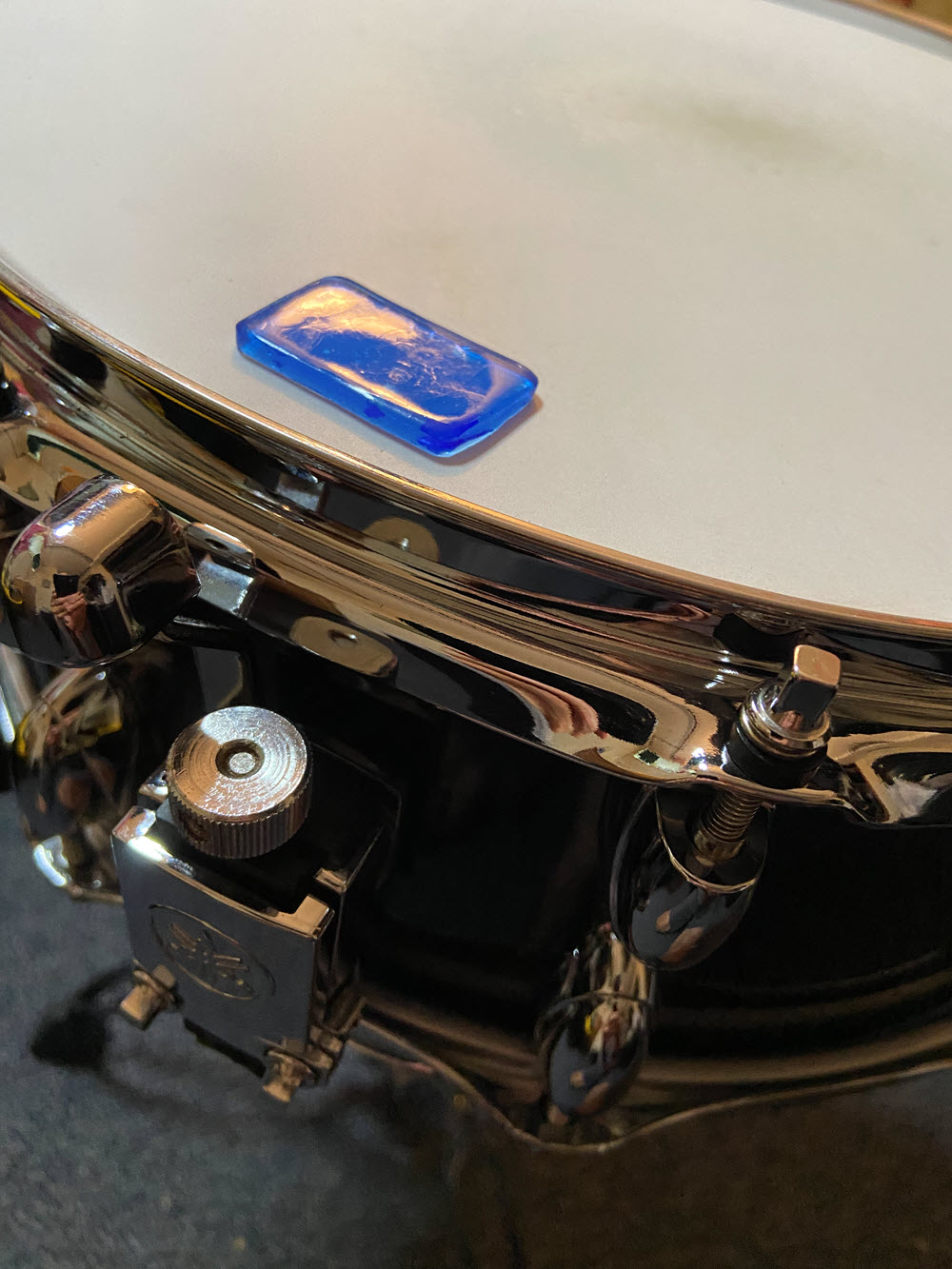
In Part 2 we’ll look at how tuning, bearing edges and hoops affect the sound of your drums.











